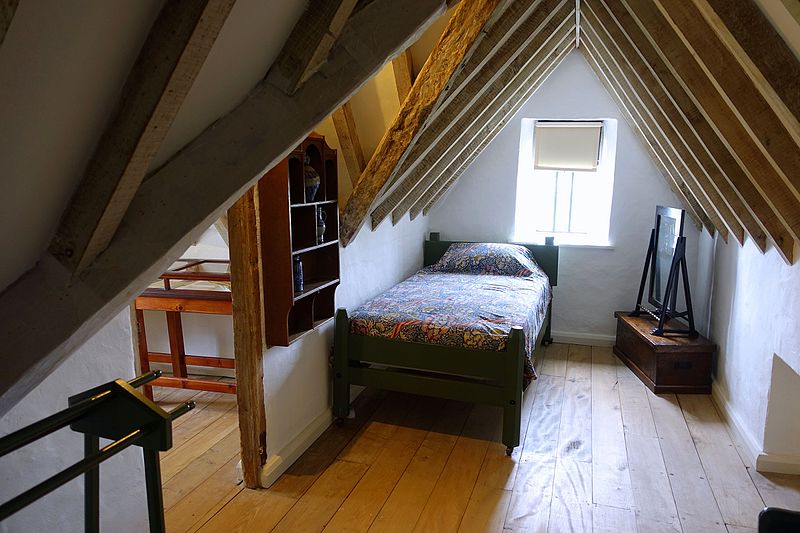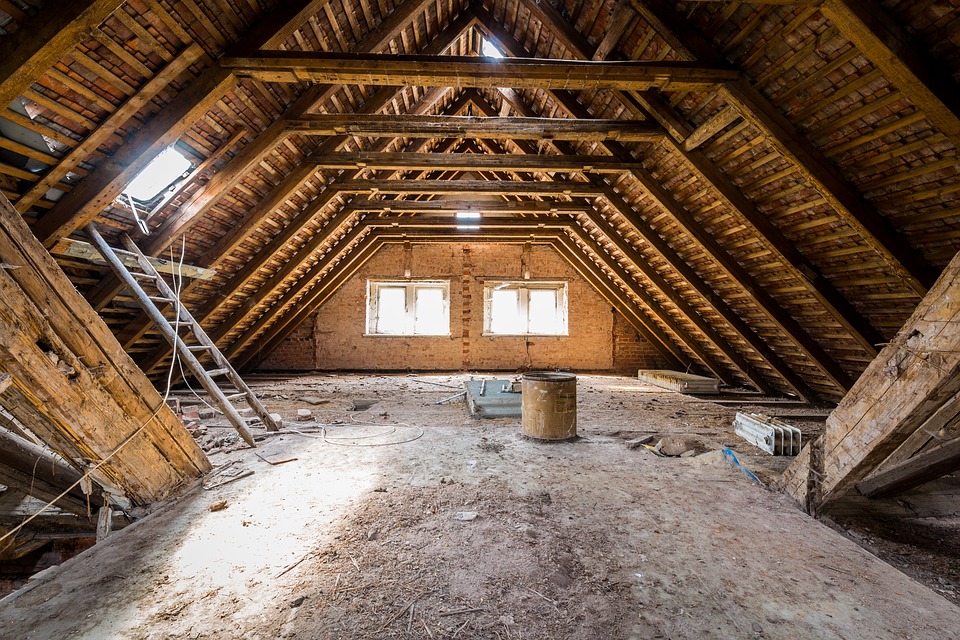Get to Know Your Home: Attics
The attic is an often overlooked but wonderfully versatile part of a home. Depending on how it is constructed and finished, it can serve as a comfortable living space or guest quarters, storage space, or just a climate-mitigating buffer between the elements and the rest of your home. It can be home to family heirlooms, baseball collections, holiday decorations, bats, and even the occasional madwoman (I’m looking at you, Charlotte Bronte). And of course, at some point in our lives, we’ve all come across a story where children venture into an old attic and stumble upon magic and mysteries. This week, my own sons are camping out in our finished attic with their grandparents, their stuffed animals, and their own small Christmas tree, so I think it’s high time I took a look at the history, features, and possibilities of that wondrous, slope-roofed space we call an attic.
The first question that came to mind is why exactly we do call the space between the top floor and the roof an attic. Like many great things (or so my Classicist wife tells me), the name comes from the ancient Mediterranean, specifically the area of Greece around Athens, called Attica. This area was known for a particular architectural element, consisting of a low wall sitting on top of a building’s main structure and providing both extra height and extra space for decoration. The feature was particularly popular among the Romans, who began to refer to it by the adjective “Attic” in honor of the region where it was best developed. It is also apparently to the Romans that we owe the tradition of sticking everything we own up in the attic, since they made a habit of decorating the attics of their buildings and arches with statuary, dedicatory inscriptions, and anything else they could think of to commemorate their own largesse in building a public monument.

At any rate, the Roman name stuck, and, with the re-emergence of interest in classical styles in the Renaissance, the feature and its name became popular again. By the eighteenth century, the term’s range had expanded to include not only the façade itself but any space behind and enclosed by it. Today, the word “attic” is used only rarely in its original architectural sense (mostly in naming the parts of monumental buildings like the Lincoln Memorial or the American Museum of Natural History in New York), and almost always refers to the space nestled right under a house’s pitched roof.

There are a lot of terms associated with attics – I’ve heard them referred to also as lofts, garrets, galleries, overheads, and even sky parlors – and several kinds of residential attic. A scuttle-attic, for example, is an attic that can only be accessed through a hole or hatch in a wall or ceiling. The hatch can be equipped with pull down stairs or reached with a ladder, but access is limited - sometimes intentionally, as many builders don’t want homeowners disturbing insulation or other functional materials in an attic not designed to be occupied regularly. On the other end of the spectrum, a habitable attic is designed to have enough strength in its joists to allow it to be finished and used as living space. It must also meet minimum requirements for square footage and ceiling height. In most places, an attic must have a finished floor, at least 70 square feet, and ceiling heights of at least 7 feet over at least 70% of the square footage to be considered habitable. Habitable attics are also almost always accessed by a permanent stairway.
If you do have a habitable attic that isn’t yet finished, it provides some exciting opportunities for designing a living space. Since you don’t have to work around load-bearing walls as on lower floors, you can do almost anything you want with the open space you have (as long as the walls below can bear the increased weight and you’re complying with building codes). You’ll want to make sure you have plenty of insulation and some plan for controlling the climate, since attics are notoriously cold in the winter and steamy in the summer. Smoke detectors and some sort of ventilation are required in most places as well. If you have the space and money and plan to spend a lot of time in your attic, some experts also recommend running pipes to the attic and installing at least a partial bathroom so avoid having to run up and down the stairs all the time.

If your attic isn’t habitable, make sure you still give it the love and care it deserves. If it’s too small for storage (attics with less than 42” between the floor joists and the ceiling beams are usually defined as “attics without storage”), consider having it sealed and don’t mess around with it. Just sit back and let it help regulate the temperature in the rest of your house. If it is big enough to store things in, be sure that you’re not putting anything too heavy up there (the floor’s weight bearing ability is determined by the size and spacing of the joists) and that the space is properly ventilated. Proper insulation is also a good idea if you go to the attic frequently – storing items or walking on insulation in the floor can compact it, making it less effective, and many experts recommend springing for spray-foam insulation in the attic ceiling.
So enjoy the beauty and quirks of the unassuming attic, and let me know if you find any magic or mysteries up there. I hear that happens sometimes.

